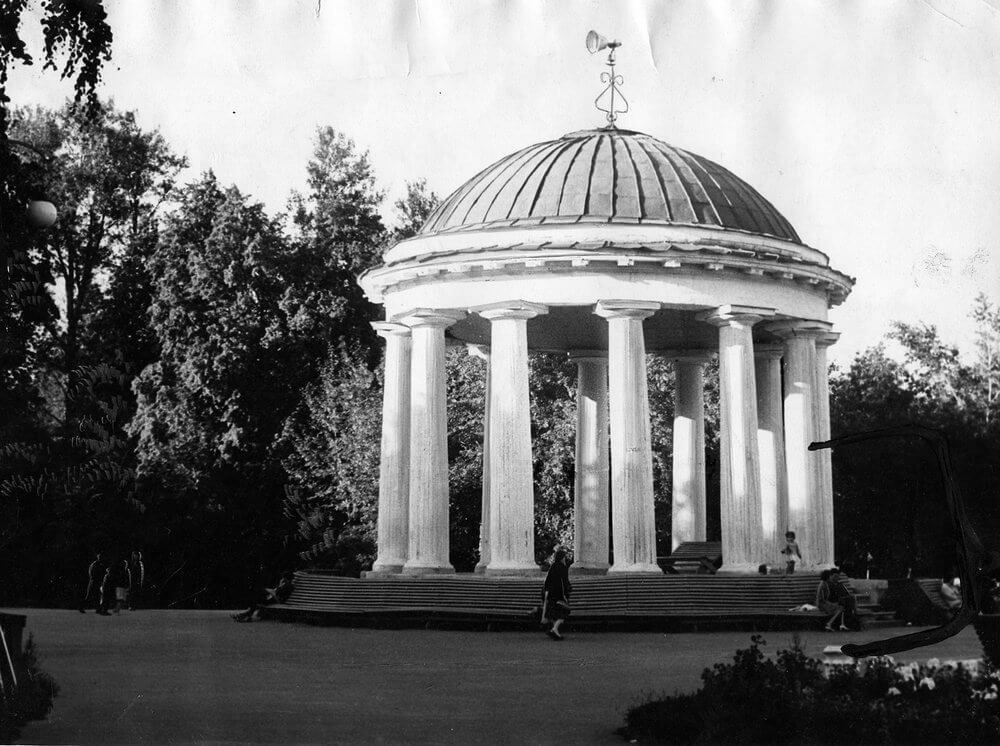Перевести на Русский
Rotunda means “round” in Latin. Rotundas were built in Ancient Rome, medieval Europe, and in the 19th century the fashion for open gazebos for relaxation, the roof of which rested on a circle of columns, reached Russia.
In 1824, in Perm, for the arrival of Emperor Alexander I, two identical rotundas were built according to the design of architect Ivan Ivanovich Sviyazev – on the Kama embankment and in the Zagorodny (Country) Garden. As followed from the inscription on the rotunda in the Zagorodny Garden, it was opened on September 24, that is, almost a week before the arrival of the Sovereign.
The white structure built on a stone stylobate, consists of 12 columns supporting a hemispherical dome. The structure is wooden but due to the finish it gives the impression of a stone one. A spiral ventilation system was used in the rotunda: a larch trunk was staggered with wooden rings, and boards were nailed to the rings and then plastered. Below the columns there were small holes through which air penetrated into the columns. Due to pressure difference, the air passed in a spiral around the larch trunk and exited through a hole under the roof cap, so even in rainy weather the tree trunks dried out in a matter of minutes.
On the roof of the rotunda there rises a metal forged spire. In the northern part of the gazebo there is a memorial plaque with a relief text: “To the Perm Society. September 24th, 1824”.
In early October 1824, Emperor Alexander I travelling in Perm along Zagorodny Boulevard saw the rotunda and approved it. Today, the rotunda in the Gorky Park is one of the main architectural landmarks of Perm.
The second rotunda was demolished at the beginning of the 20th century, when a railway was built from Perm I Railway Station to Zaimka (Perm II Railway Station).
Другие объекты императорской линии
Карта маршрута императорской линии:
Сайт создан при поддержке МАУК “ЦВЗ” г. Перми cvzperm.ru
Императорскаялиния.рф 2022 г.



